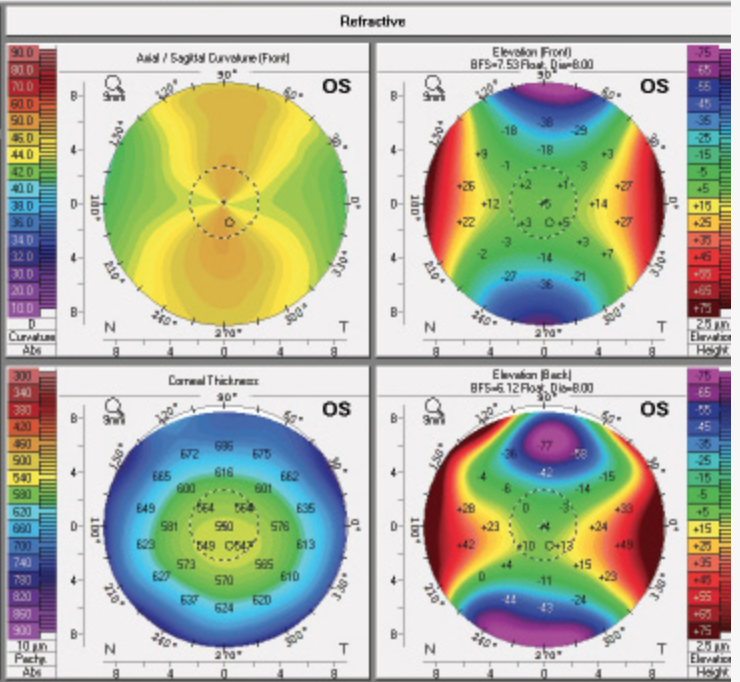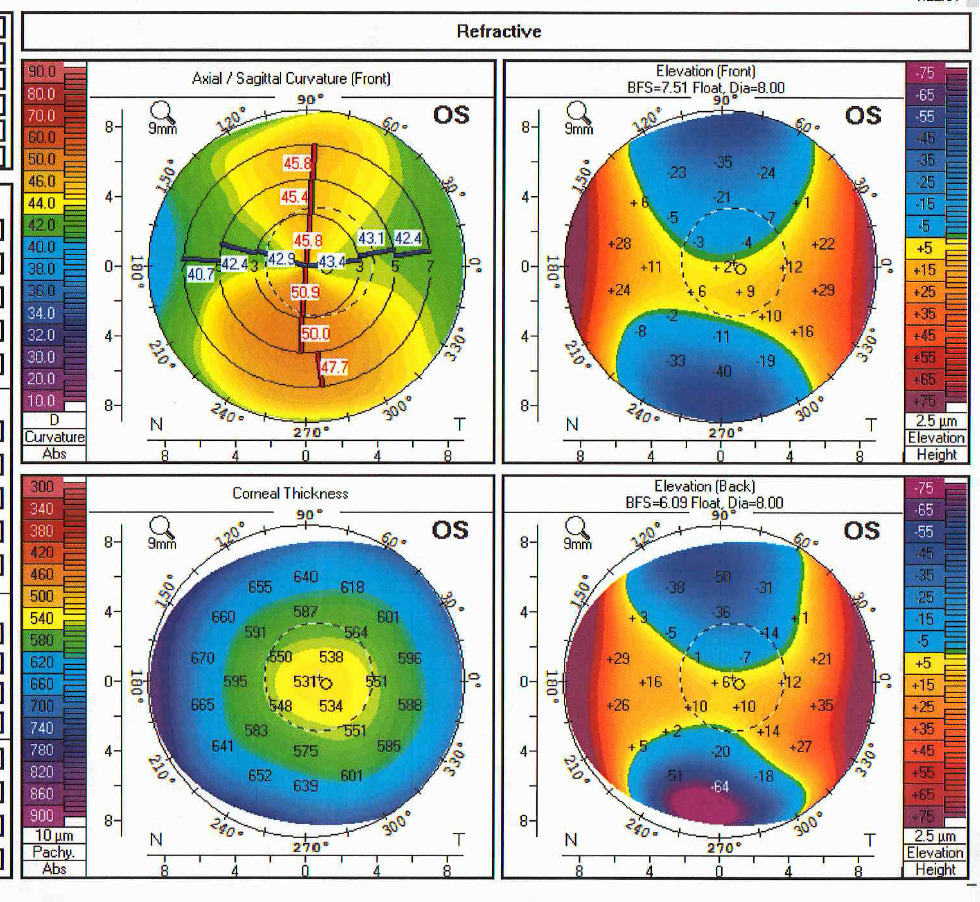Home » How Do I Correct Regular and Irregular Astigmatism?
How Do I Correct Regular and Irregular Astigmatism?
Everyone has heard of “astigmatism.” Astigmatism basically means that your cornea, or your eye, is shaped more like a football than a basketball – more cylindrical than spherical. Astigmatism is not an eye disease at all; it is merely another number in your prescription and describes the specific curvature of your eye, just like the spherical prescription (the first number in your prescription). Uncorrected astigmatism can give you haloing, double vision, or imperfect vision, but is easily correctable. Astigmatism is corrected in addition to the spherical correction using glasses, soft contacts, or rigid contact lenses. It can also be corrected with LASIK, PRK, and eventually cataract surgery.
Astigmatism can be separated into two categories – regular and irregular astigmatism. Astigmatism looks like a bowtie when a Pentacam, or corneal topography map is performed. This image is performed to evaluate the corneal irregularities and to evaluate if there is any irregular astigmatism. Regular astigmatism has a symmetric bowtie pattern on corneal topography.
Regular Astigmatism

Besides the amount of astigmatism, there is also the axis- or the direction in which it occurs. Regular astigmatism follows a natural pattern during our lives. In younger people, astigmatism is usually “with the rule” or at the 90 degree axis. That means that at 90 degrees, or vertically, the cornea or eye is steeper than at 180 degrees, or horizontally. If we are to look at the football example, this football is laying on its side. As we go through life, the astigmatism changes to “against the rule” – and aligns more with the 180 degree axis. This means that the football will be standing up vertically. This information is important to eye care professionals who are fitting glasses, contacts, or choosing your intraocular lens powers for cataract surgery. While this “with” and “against the rule” nomenclature is generally the case, there are many exceptions and your eye is not abnormal at all if it does not follow this rule. Some people can have oblique astigmatism as well – which is exactly what it sounds like- it is around a 45 degree axis in either direction. All of these astigmatisms, if they are regular, can be corrected with glasses, soft contact lenses, or rigid gas permeable lenses.
Irregular astigmatism will look like an asymmetric bowtie pattern on a corneal topography or Pentacam. One side of of the bowtie is flatter and the other side is steeper. Irregular astigmatism cannot be fully corrected with glasses, and sometimes not with soft contact lenses. Rigid gas permeable lenses are the best modality to correct irregular astigmatisms. Scleral lenses, or Boston PROSE lenses are larger hard lenses that go onto the white part of your eye and correct this astigmatism as well.
Irregular Astigmatism

Irregular astigmatism could be a sign of disease or corneal pathology. The most common cause of irregular astigmatism is Keratoconus (described in a separate post above!). Corneal ectasia form a laser procedure can cause this as well. Other causes of irregular astigmatism include any corneal pathology such as a corneal dystrophy (like Anterior Basement Membrane Dystrophy, Fuchs’ Dystrophy, etc.) a residual scar, or after a corneal transplant. Keratoconus and corneal ectasia can be progressive diseases and can be treated with Collagen Cross Linking to prevent progression (see post about Collagen Cross Linking separately).





